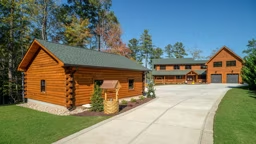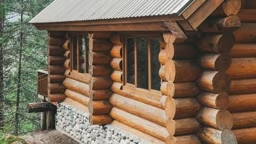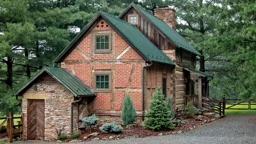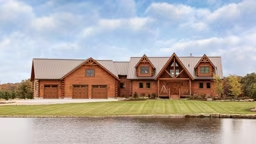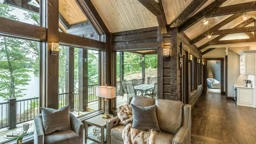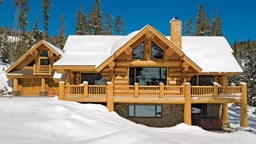By Paul Peebles
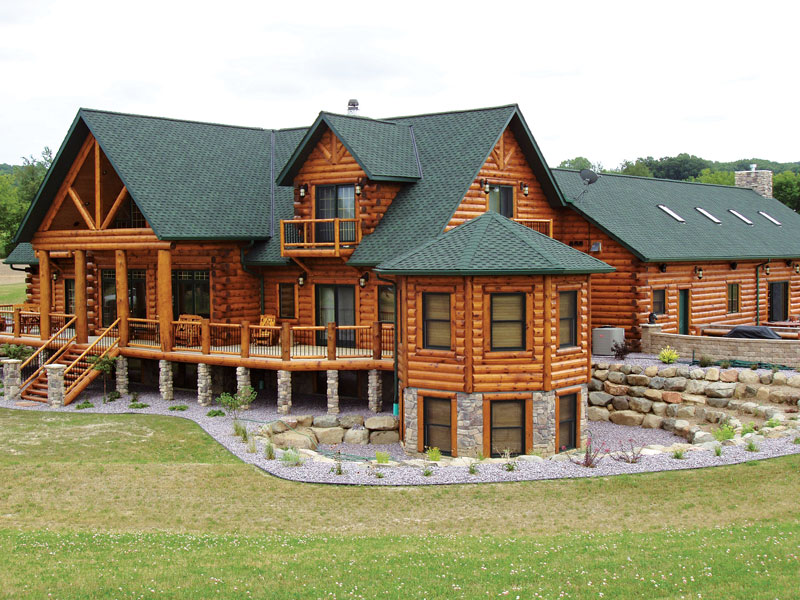
It is hard to improve on cherished memories of a special place and the fun you had there. For many of us, the first experience we had with a log home came when we were young and spent summer days at a cabin owned by a family member or friend. We always remember fondly the food, late-night card games, hunting, fishing and other activities that are etched into our brains as good times.
What we fail to remember is that most of those old cabins were pretty rough. At the time, we didn’t care if some of the rooms weren’t heated or cooled properly; that critters sometimes showed up in places they didn’t belong; that the water tasted a little like rust; or that you had to cut and haul wood into the house to stay warm. It was all part of the charm. You can certainly re-create a cabin like the one in your memories; however, log homes manufactured and built today can be just as comfortable (and have every modern convenience) as a home in the city. In fact, today’s log homes are much improved over those built just 10 years ago.
There are many reasons for the improvements in modern log home construction. The most important of these advances have been brought about because of the demands of today’s log home buyer. As consumers, we want the products and techniques used on our homes that make them more maintainable, more energy efficient and more comfortable to live in. The log home industry has responded to these wishes in a variety of ways. I reached out to log home experts all over the country to help me tell you about these improvements. Here’s what they had to say.

Improvements in Maintenance
Matthew Sterchi of Stonemill Log Homes in Tennessee says, “The design of the homes we currently build is much better that what we were doing just a few years ago. Now, we use wider roof overhangs and porches to protect log walls from the effects of the sun and rain. We also use newer low-maintenance manufactured materials in areas that will be highly exposed to the weather.” Sam Satterwhite of Texas-based Satterwhite Log Homes has told me many times that, “We just flat refuse to build a home without proper roof overhangs and porches to protect the log walls.
It may cost a little more in the beginning, but the buyer saves money in the long run. And they are happier with the home that we built for them.” Lynn Gastineau of Gastineau Log Homes in Missouri has “begun using manmade materials on gable end walls and has also added aluminum soffits and fascia material for lower maintenance” where protection from the weather exposure isn’t as easy. It has been my own experience that chinking and caulking materials now used on homes to seal between logs can enjoy an exceptionally long life, when properly installed.
I say this because I have maintained our family cabin now for more than 20 years and have made very few repairs in caulked or chinked areas. Stains have also improved — especially the newer water-based products — though proper design and regular upkeep go a long way to making any stain last. Last summer, I re-stained one side of my home for the first time in 20 years, thanks to adhering to my maintenance routine.
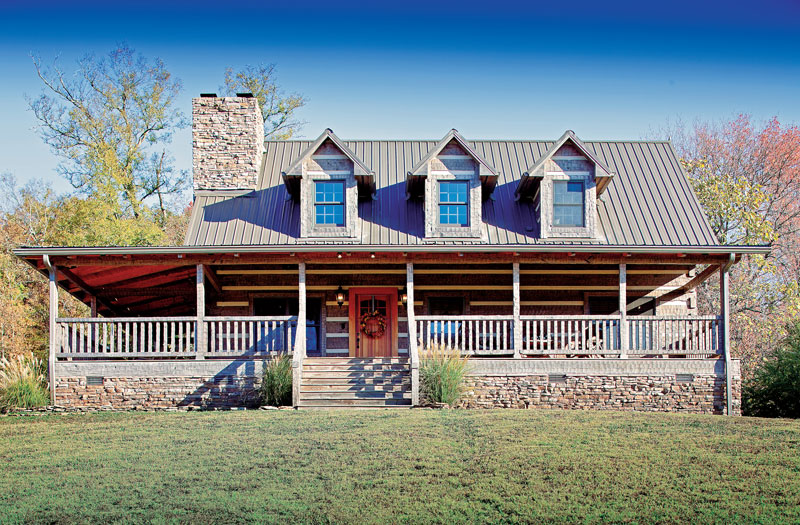
Improvements in Manufacturing and Materials
In addition to design, many improvements have been made in the machinery used to mill logs, create corners and other joinery, preserve wood and maintain appearance. Two separate manufacturers, Jay Parmeter of Golden Eagle Log Homes and Joe Folker of TimberHaven Log & Timber Homes both tout the benefits of engineered lumber and logs as resistant to warping, twisting and checking.
They claim these materials allow for milling precision, easier installation and greater clear spans with fewer posts in rooms and piers in basements. Chris Wood of Tennessee’s Hearthstone, Inc. says that, “The advantage of using vacuum kilns for drying timber up to 40 feet in length, combined with the robotic machinery we use helps us manage complex joinery. This has resulted in improved consistency and efficiency with the finished product. Precut hips and valleys with dormer solutions are the norm, speeding up our onsite installation service. Buried (or exposed) steel plates engineered with precut and pre-drilled timber trusses allow us to design clear spans over 40 feet – all done on machines that make it more cost efficient for the consumer.
Most log systems depend on some type of fastener to connect the logs during construction. Years ago, these fasteners were usually long spikes, which were not the best product for the job at hand. Today, there are several brands of hardened screws which make fastening logs together easier and faster. They also allow for greater compression between courses and result in fewer settlement issues.
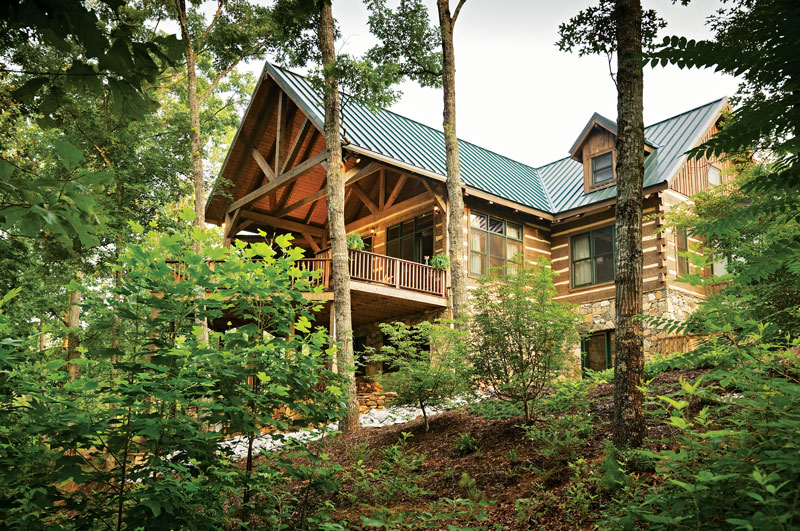
Improvements in Government Regulations
Anyone who knows me knows I am no fan of regulations. However, a few years back the U.S. Department of Energy began demanding that air-tightness tests be run on all new homes in many parts of the country. Sooner or later, all homes will be tested with this technology.
At first I resisted, until I actually started testing log homes with that equipment. I quickly learned that a properly sealed home is a better home. Not only are energy bills more manageable, but the air quality and comfort of homes that are properly sealed is vastly improved. Allergens and dust are greatly reduced, HVAC systems last longer and perform more efficiently and pests, such as wasps, flies and invasive insects like ladybugs and stinkbugs, are banned from the living space. Perhaps the greatest improvement resulting from these regulations is the wide use of spray-foam insulation.
I can tell you from personal experience with this product that the difference between fiberglass batt insulation and these new spray-foam products is impressive. You get more insulation in the same space because spray foam begins as a liquid and then instantly expands into foam to fill the cavity and every little cranny through which air could flow, exponentially improving air-tightness. The difference in a home with fiberglass insulation and a home in which foam has been used is similar to the difference between an older plastic beer cooler and a newer Yeti cooler – amazing.
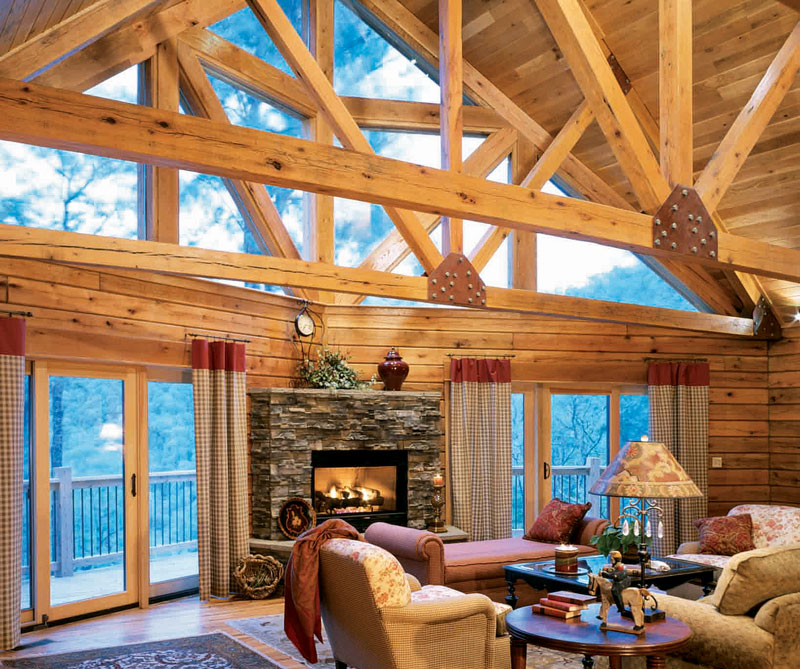
General Improvements in Housing Overall
The past few years have borne witness to many improvements in systems supplied inside the home. Pex and other brands of plastic plumbing have practically replaced copper pipes and provide a huge benefit to homeowners, allowing for quick installation and easily modified water systems. Heated flooring has come down in cost, making this very efficient mode of heating more attainable.
Speaking of heat, ground-source heat pumps are vastly superior to standard heat pumps, especially in northern climates. I know of a couple who built a 5,500-square-foot home in Michigan and their heating bill is as little as $70 per month. Golden Eagle owner Jay Parmeter told me, “There is no reason a homeowner cannot have everything in their log home that they could have in conventional housing – zero-entry garages, curb-less showers, heated floors and towel racks, higher toilets vanities and countertops – anything you can imagine, you can have.” I love my log home.
Over the years, I’ve met thousands of people who also love theirs. The appeal of wood is undeniable, and not just for those lucky enough to have had wonderful experiences in their grandfather’s log cabin. Real wood, artfully worked and finished adorns many of the most beautiful homes in the world. And with the building-science advances that have been made, log homes are more comfortable and efficient than ever. Living in one is like being on vacation every day. I hope you have the opportunity know that feeling for yourself.




